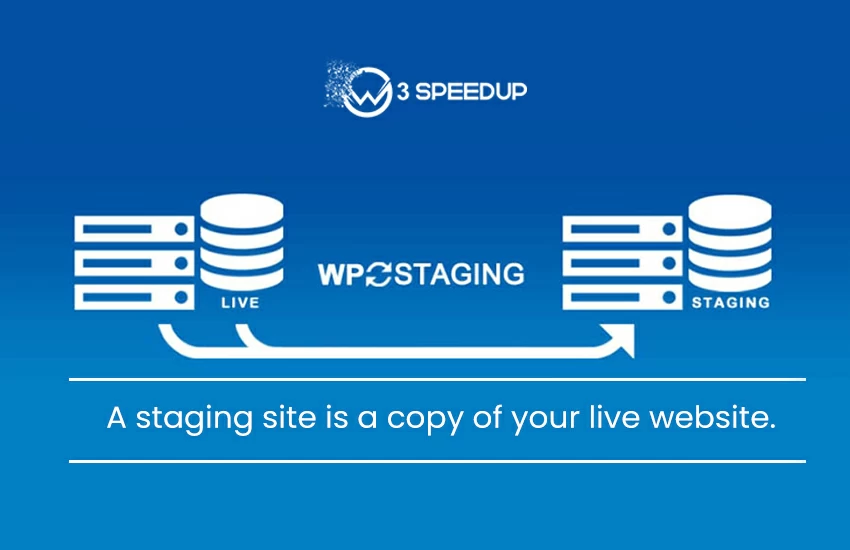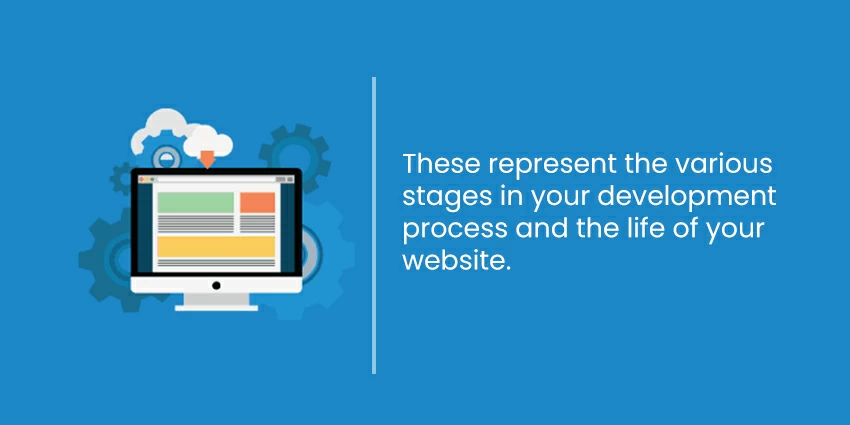We’re sure you’ve faced situation where you’ve updated a theme or plugin and found a bug that affects your site’s functionality. You are not alone, almost every developer has been there.
Staging sites can provide relied by adding a layer of protection between your updates and your site. People can and will perform their updates and changes to their production/live site without testing these updates. Before WordPress 5.2 this could result in your site getting the horrible white screen of death. It’ll result in panic and you trying to get your site up and running again.
What is a staging site?

A staging site is a copy of your live website. It is used to test your plugin and theme updates or to test a new feature to your site. The staging site is usually non-public facing, thus keeping your testing away from your customers.
Plugin and theme developers often ask for the access to a staging site to do testing while they provide assistance and support. This ensures that the changes they make do not interfere with your live site and business. Plugin developers do their best to test their products. However, every single site is unique and issues can creep up.
We, at W3Speedup, have a policy to never perform any debugging or testing on live sites for this very reason.
Development site vs Staging site vs Product site

You may have heard terms like such as development site, staging site, QA, testing, or production. These represent the various stages in your development process and the life of your website.
This is usually hidden from users and as an end-user, you wouldn’t normally see these. If you want to take control of the technical aspects of your site, it’s a good idea to learn what they are for and when to use them.
Development Site
A development site is usually the first site in the process. This contains all your code, lots of debugging, and this is usually where you will test your plugins/themes or introduce a new feature. This version will not have any of the same data as your production site.
This is the sandbox for your testing and development. It can either be locally or remotely hosted. This is mostly created by the developer or agency and might not be available in your setup.
Staging Site
Whe staging site is a copy of your live site. Here, the alterations you tested in development can be tested on actual data to ensure any final issues or bugs can be ironed out. This is usually carried out on a web server that can be accessed remotely. But, this is protected from user view.
Production/Live Site
The production or live site is the end product that users see. This is what your customers/users will use. This is the core of your business and should be treated with such importance. This should only get updates once they pass all your testing in the previous versions.
Do you really need a staging site?

If you’re running an online business that is powered by WordPress and WooCommerce, then we believe that having a staging site is absolutely mandatory. If your site goes down, you’ll most likely lose money in the process. The costs of having a staging site are very small. That’s why you must include it in your initial business plan before you even consider building your site.
How to set up a staging site?

There are many ways to set up a staging site. The simplest is to ensure you have web hosting that includes staging sites in the package. This gets your staging site up and running in just a few clicks. If this isn’t possible, then a plugin is your next best option. However, we would recommend that you consider moving your hosting to a provider that includes a staging site.
Web hosting staging site
This is the easiest route you can take. Most of the popular WordPress hosting companies include simple one-click staging systems. They will often include syncing systems that allow you to sync either both ways (move changes from staging to production) or one way (back to staging).
Using a plugin
If you don’t have a staging site capable web host, then you can set up a staging site using a plugin. There are a couple of options available so we’ll provide the two we often recommend to our users.
Duplicator
Duplicator is a great free plugin that allows you to make a complete copy of your site. You can use this to manually create a local copy of your site. It creates an easy to use packaged zip file and installer file. So, you can easily download and move your site to another host, for staging purposes.
WP Staging
This is staging plugin that we recommend to our users regularly. With this, you can create an exact copy of your entire website for staging or development purposes in seconds. It creates a clone of your website into a subfolder of your main WordPress installation including an entire copy of your database.
There is both a free version and a Pro version. The main difference between the two is that the free version is for single sites only and you cannot isolate your data as easily. The pro version can be handy if you have multiple team members and require more control over your staging process.
Conclusion
Having a staging site for your online business is a must in 2020. It’ll ensure that your business continues to operate while you test any and all updates. All new features should always be tested in your staging environment first. There are so many options available for staging sites today, so, pick your choice and streamline your development process.



I think this website contains some real great info for everyone : D.
I have been checking out some of your posts and I can claim pretty clever stuff. I will surely bookmark your blog.
Appreciating the time and effort you put into your website and in depth information you present. It’s great to come across a blog every once in a while that isn’t the same old rehashed material. Great read!
Thank you for your article. It’s very helpful to me.